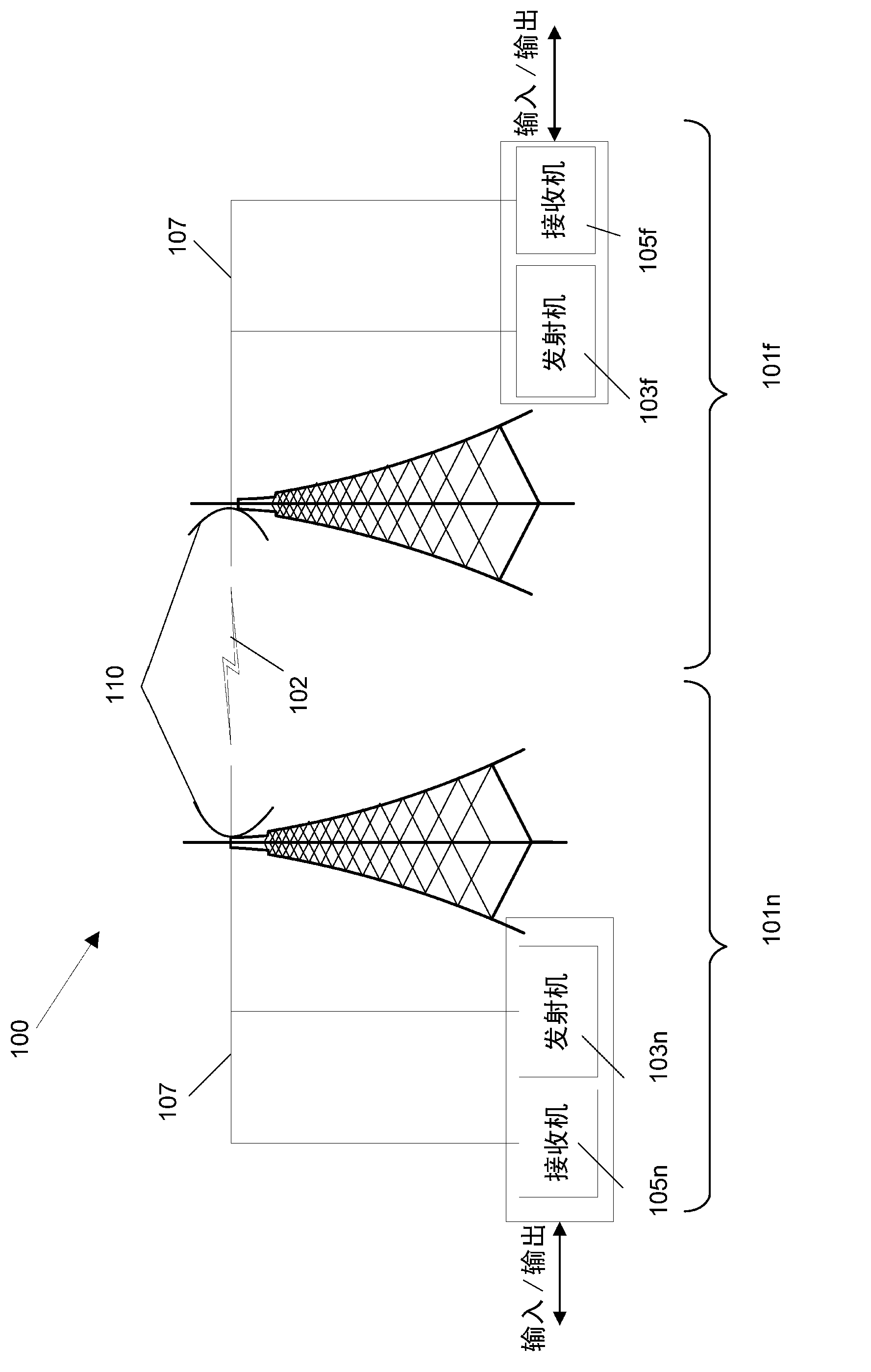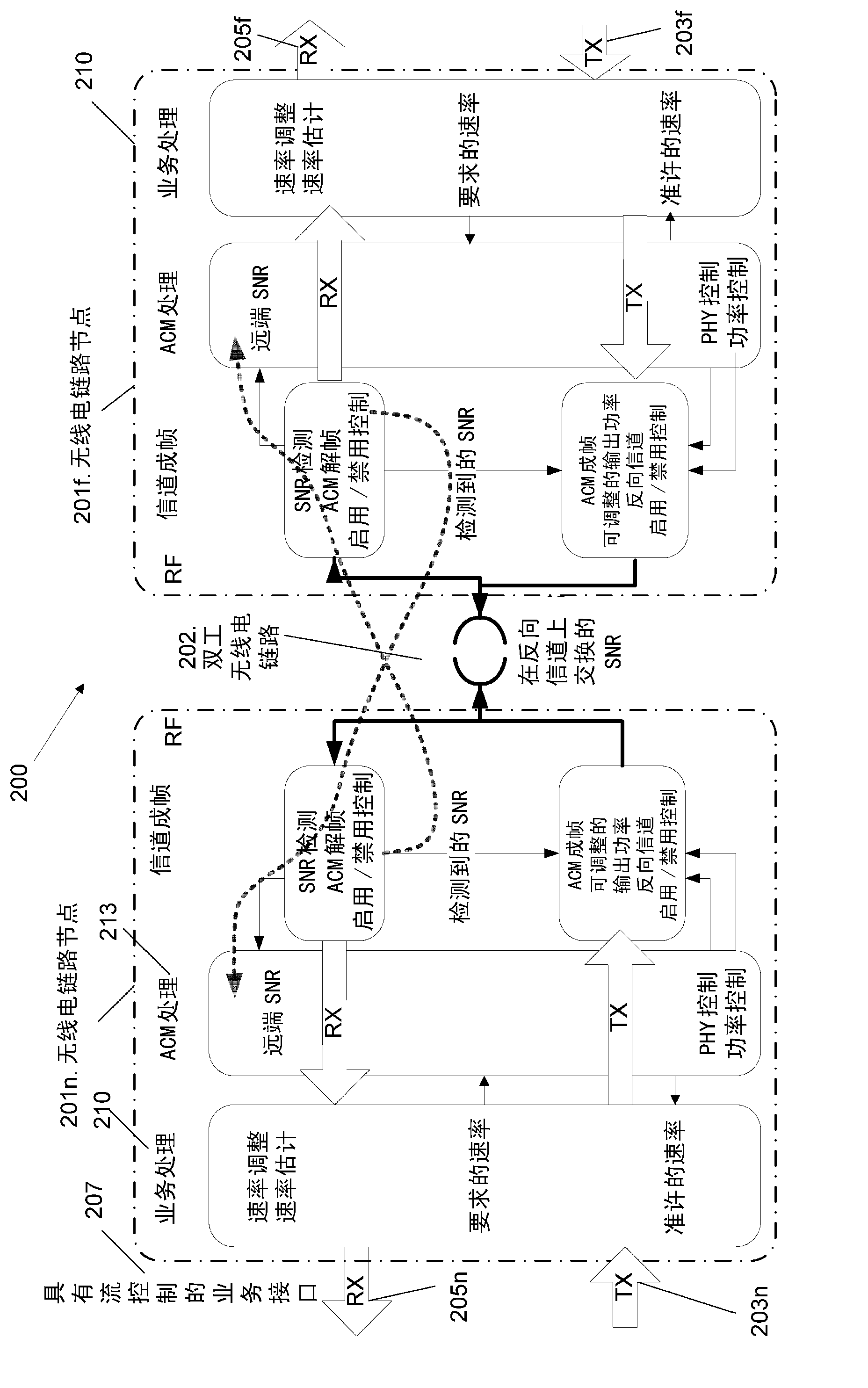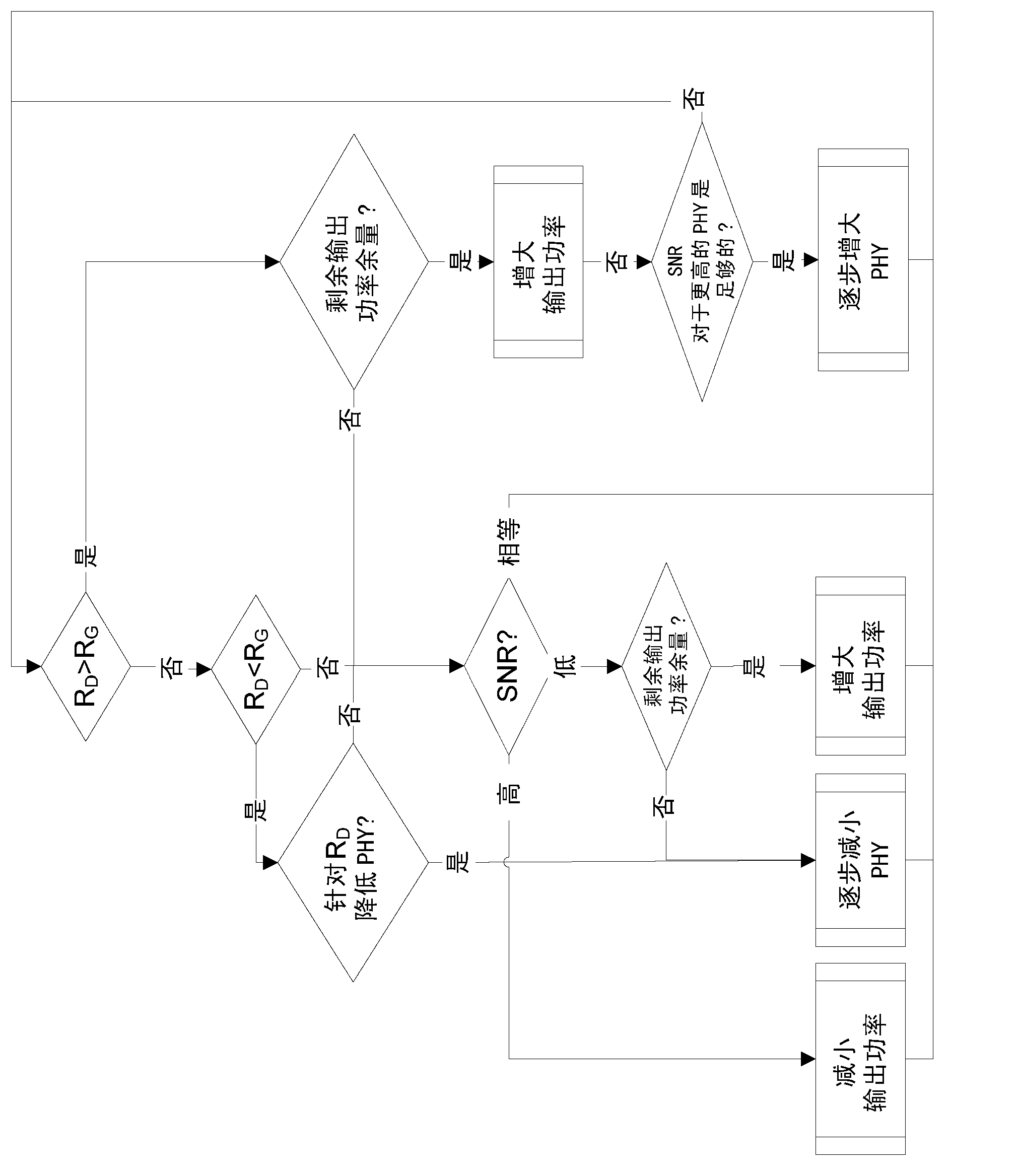Rate optimized power consumption in micro wave radio links
A radio link and rate technology, used in radio link systems to control power consumption in radio link systems, can solve problems such as PA power consumption scaling, reduce failure interval time, reduce output power, operate The effect of temperature reduction
- Summary
- Abstract
- Description
- Claims
- Application Information
AI Technical Summary
Problems solved by technology
Method used
Image
Examples
Embodiment Construction
[0039] Embodiments herein relate to point-to-point duplex radio link systems based on time division (TD), frequency division (FD) or code division (CD).
[0040] for example, figure 2 A single carrier duplex radio link system 200 is shown. Duplexing can be achieved by time division (TD), frequency division (FD), or code division (CD). The radio link system 200 comprises a near-end radio link node 201n and a far-end radio link node 201f connected via a data transmission system (eg a carrier duplex radio link / channel 202). The near-end radio link node 201n includes a near-end transmitter 203n and a near-end receiver 205n. The remote radio link node 201f includes a remote transmitter 203f and a remote receiver 205f. The information signal is provided eg to the traffic interface 207 of the near-end receiver 205n and is moved with the help of the radio link 202 to the far-end receiver 205f of the far-end radio link node 201f.
[0041] The radio link system 200 may be symmetric...
PUM
 Login to View More
Login to View More Abstract
Description
Claims
Application Information
 Login to View More
Login to View More - R&D
- Intellectual Property
- Life Sciences
- Materials
- Tech Scout
- Unparalleled Data Quality
- Higher Quality Content
- 60% Fewer Hallucinations
Browse by: Latest US Patents, China's latest patents, Technical Efficacy Thesaurus, Application Domain, Technology Topic, Popular Technical Reports.
© 2025 PatSnap. All rights reserved.Legal|Privacy policy|Modern Slavery Act Transparency Statement|Sitemap|About US| Contact US: help@patsnap.com



